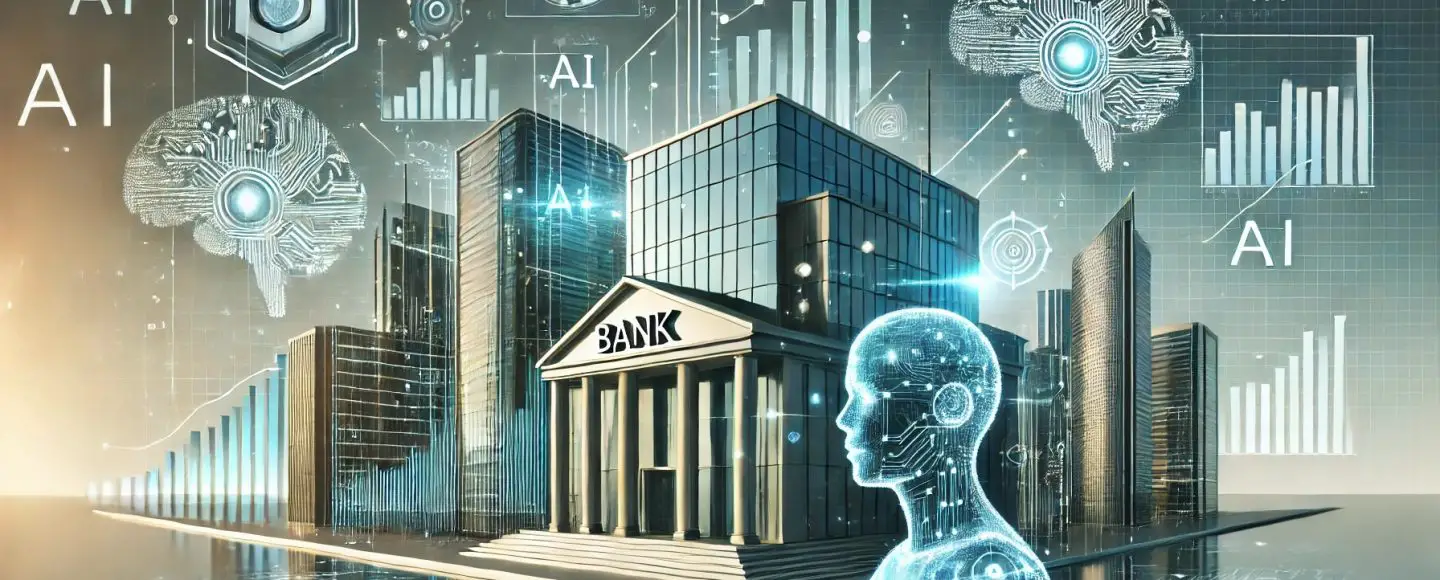How to Use AI and Proactive Services to Anticipate Customer Needs?
Where customer expectations grow by the minute, businesses must constantly evolve to stay ahead. Traditional approaches to customer service—where businesses wait for customers to bring up their issues—are no longer... The post How to Use AI and Proactive Services to Anticipate Customer Needs? appeared first on Bigly Sales.

Where customer expectations grow by the minute, businesses must constantly evolve to stay ahead. Traditional approaches to customer service—where businesses wait for customers to bring up their issues—are no longer sufficient. Modern customers don’t just want solutions to their problems; they expect companies to predict and prevent those problems before they arise.
This shift from reactive to proactive customer service is a game-changer, and AI is at the heart of this transformation. AI empowers businesses to anticipate customer needs, enabling personalized and timely interventions.
Here, we’ll explore how AI and proactive services work together, why they matter, and how businesses can implement them effectively. By the end, you’ll understand how to use these tools to elevate your customer experience and achieve exceptional results.
What is Proactive Customer Service?
Proactive customer service is a forward-thinking approach where businesses anticipate and act on customer needs before customers make contact. Unlike reactive customer service—which relies on customers reaching out with their problems—proactive service seeks to prevent or address issues early.
Imagine your flight is delayed, but instead of waiting for you to check the airport website, your airline sends you a message explaining the delay and offers you compensation or a voucher for food.
Or consider receiving a notification from your credit card provider warning you about suspicious activity on your account before you even notice it. These are real-world examples of proactive customer service in action.
This approach doesn’t just solve problems—it builds trust and loyalty. It shows that your company is attentive, values customer time, and takes initiative. For businesses, proactive service can reduce support costs, improve operational efficiency, and foster stronger customer relationships.
Difference Between Proactive and Reactive Service
To fully grasp the power of proactive service, it’s essential to understand how it differs from reactive service. Reactive service is the traditional model. In this scenario, customers initiate contact when something goes wrong.
For example, they might call a support center because their internet connection is down or reach out via email to report a billing error. While this model solves immediate problems, it often leaves customers feeling frustrated and unsupported because the burden of taking action falls on them.
Proactive service flips the script. Businesses using this approach predict and resolve potential problems before customers know the issue.
For example, if an e-commerce site notices that a product shipment might be delayed, it could send an advance message to the customer, apologizing for the inconvenience and providing a new delivery timeline. This approach reduces customer stress and fosters goodwill.
The difference between these two approaches lies in the timing and intent of the interaction. While reactive service is sometimes necessary, businesses that adopt proactive strategies can improve customer satisfaction, reduce churn, and enhance their brand reputation.
Why AI is the Backbone of Proactive Customer Service
Proactive service wouldn’t be possible at scale without AI. AI enables businesses to analyze large volumes of data, identify patterns, and predict customer behavior. With the right AI tools, companies can anticipate customer needs and take timely actions to address them.
Here’s how AI drives proactive service:
Predictive Analytics
Predictive analytics is one of the most potent tools for proactive service. AI can forecast customer behavior and identify potential issues by analyzing historical data. For instance, if a customer frequently purchases a product every month, AI can predict when they will run out and send a replenishment reminder.
Personalization at Scale
Personalization has become a non-negotiable in today’s customer service landscape. AI makes personalization possible at scale by analyzing customer preferences, browsing history, and purchase behavior.
For example, streaming services like Netflix use AI to recommend content tailored to individual viewers, creating a more engaging experience.
Real-Time Monitoring
AI-powered systems can monitor customer interactions in real time, flagging potential issues before they escalate. For example, in call centers, AI can analyze customer sentiment during a conversation and alert managers if the interaction is trending negatively, enabling timely intervention.
Chatbots and Virtual Assistants
AI chatbots and virtual assistants are essential for proactive communication. They can answer common customer questions, send timely notifications, and even handle complex queries with human-like accuracy.
For example, a banking chatbot might proactively warn customers about a low account balance and suggest solutions like transferring funds or setting up alerts.
Strategies to Implement AI-Driven Proactive Services
Transitioning to AI-powered proactive service requires careful planning and execution. Here are the key strategies businesses can adopt:
Collect Comprehensive Data
The foundation of any proactive service strategy is data. Businesses must gather data from every touchpoint—website visits, purchase histories, social media interactions, customer support tickets, etc. The more comprehensive the data, the better the insights.
However, it’s equally important to prioritize ethical data collection practices and comply with privacy regulations like GDPR.
Build and Optimize Predictive Models
Once you have the data, the next step is building predictive models. These models help businesses forecast customer behavior and needs. For example, an airline could use predictive modeling to identify peak travel times and offer promotions or services tailored to those periods. Regularly updating and refining these models ensures they remain accurate and effective.
Leverage Automation for Personalized Interactions
AI-driven automation tools like chatbots can take proactive service to the next level. These tools can send reminders, suggest relevant products, and quickly solve common issues.
However, it’s essential to ensure that automation complements human support. For example, if a chatbot identifies a dissatisfied customer, it should route the conversation to a live agent for resolution.
Train Your Team to Work with AI
AI tools are powerful, but they’re not a replacement for human expertise. Businesses should train customer service teams to work alongside AI tools, ensuring seamless collaboration. Agents should know when to rely on AI and when to step in to provide the human touch.
Real-World Examples of AI and Proactive Service in Action
AI-powered proactive service is already transforming industries. Here are some real-world examples:
Telecommunications
Telecom companies use AI to monitor network performance and predict outages. If a problem is detected, they proactively notify customers and provide updates on resolution times. This approach reduces customer complaints and enhances trust.
E-Commerce
In e-commerce, AI recommends products based on browsing history and past purchases. Retailers also send proactive notifications about stock availability or order delays, improving customer satisfaction.
Healthcare
AI is revolutionizing healthcare by anticipating patient needs. For instance, AI systems can send reminders for medication refills, schedule check-ups, or even flag abnormal health readings for immediate medical attention.
Financial Services
Banks and financial institutions use AI to detect fraudulent activity and notify customers in real-time. They also provide proactive financial advice, such as suggesting ways to save money based on spending patterns.
Challenges of Proactive Service and How to Overcome Them
While proactive service offers immense benefits, implementing it comes with challenges. Here’s how to address them:
Ensuring Data Privacy
One of the biggest concerns is data privacy. Customers need to trust that their data is secure and being used responsibly. Businesses should be transparent about their data practices, comply with regulations, and invest in robust security measures.
Balancing Automation and Human Interaction
Automation is a key component of proactive service, but it’s not a one-size-fits-all solution. Businesses must strike the right balance by using AI for routine tasks and reserving human agents for complex, emotionally charged situations.
Continuous Improvement
AI tools and predictive models need regular updates to stay relevant. Businesses should allocate resources for ongoing training, testing, and refinement to ensure their proactive service strategies keep up with evolving customer needs.
Conclusion
Proactive service powered by AI is no longer a luxury—it’s necessary for businesses that want to thrive in today’s customer-centric world. By anticipating customer needs, companies can deliver experiences beyond expectations, fostering trust, loyalty, and satisfaction.
Implementing AI-driven proactive service requires a strategic approach, from collecting and analyzing data to building predictive models and balancing automation with human expertise.
While challenges exist, the rewards far outweigh the effort. Businesses that embrace this approach will enhance their customer experience and gain a significant competitive edge.
The time to act is now. Start leveraging AI and proactive service to anticipate your customers’ needs and take your business to new heights.
The post How to Use AI and Proactive Services to Anticipate Customer Needs? appeared first on Bigly Sales.
What's Your Reaction?





























